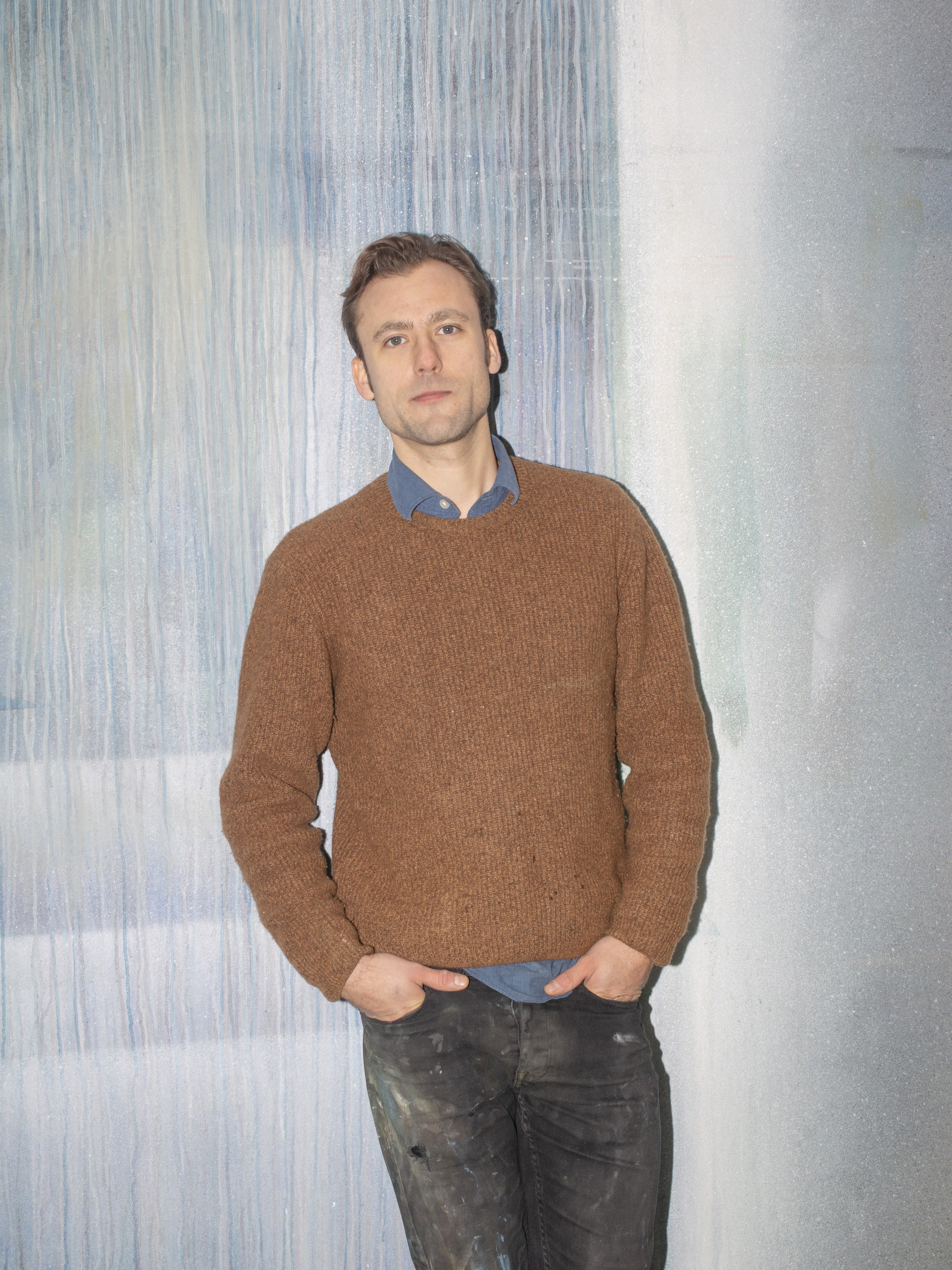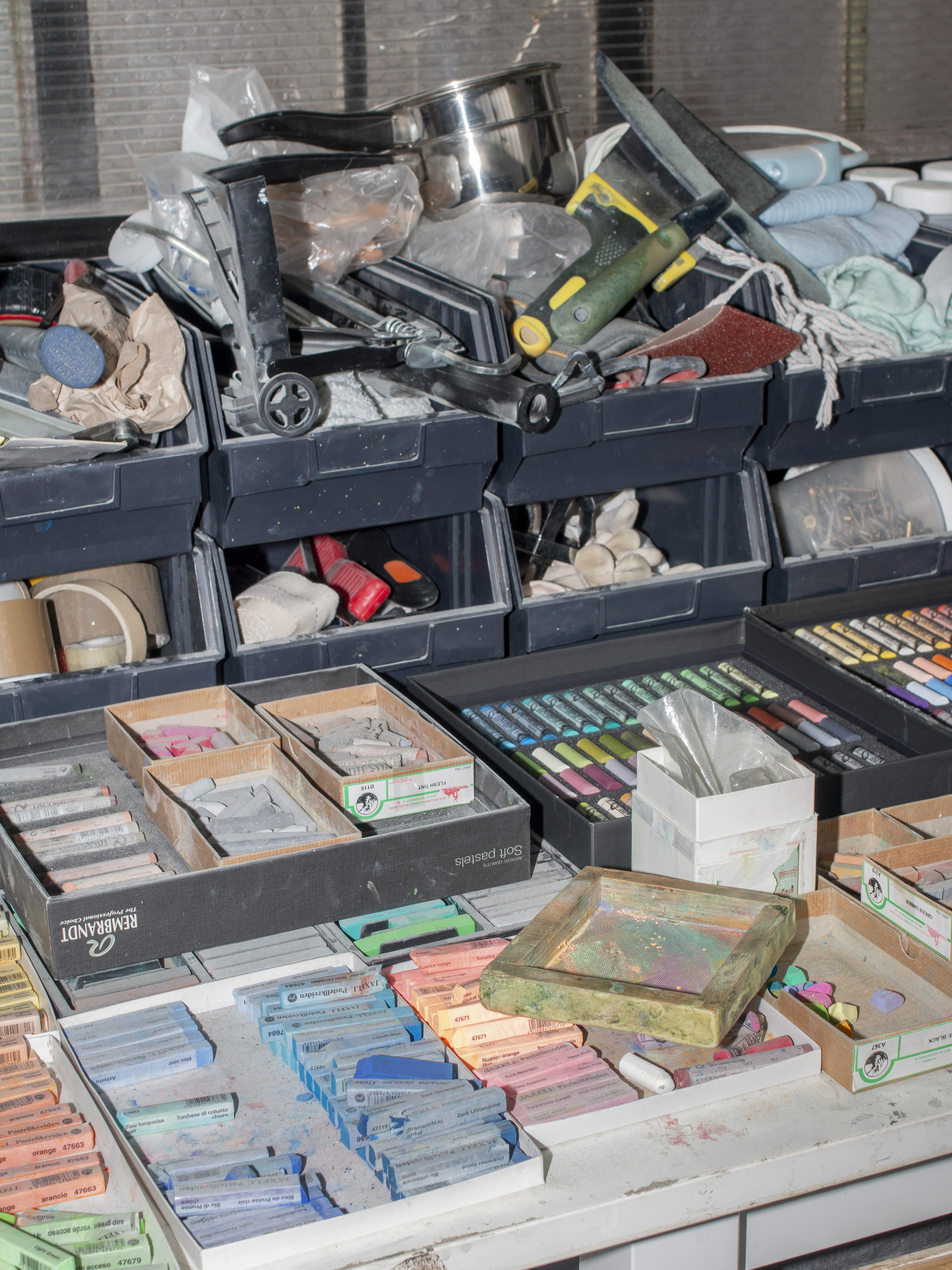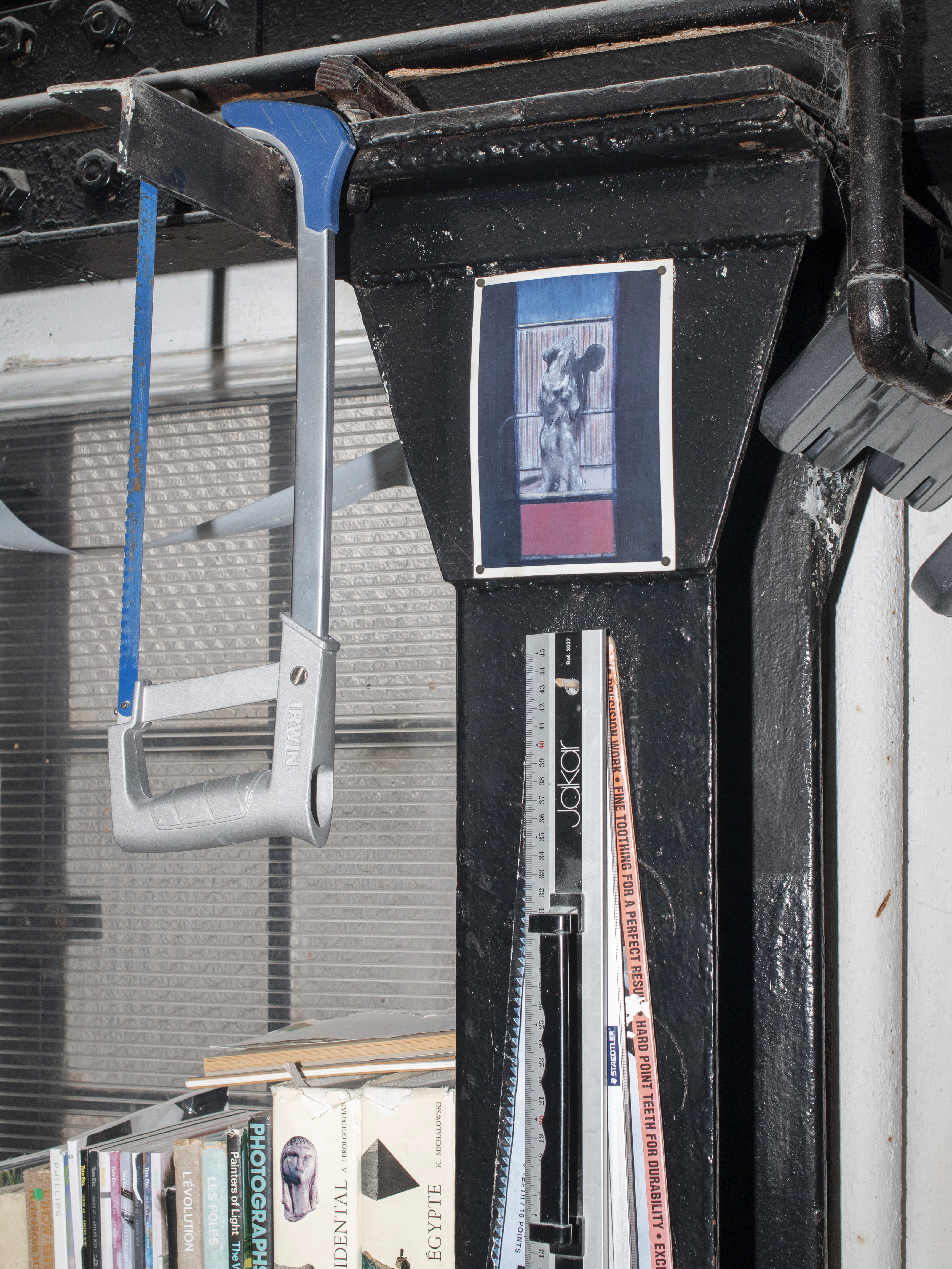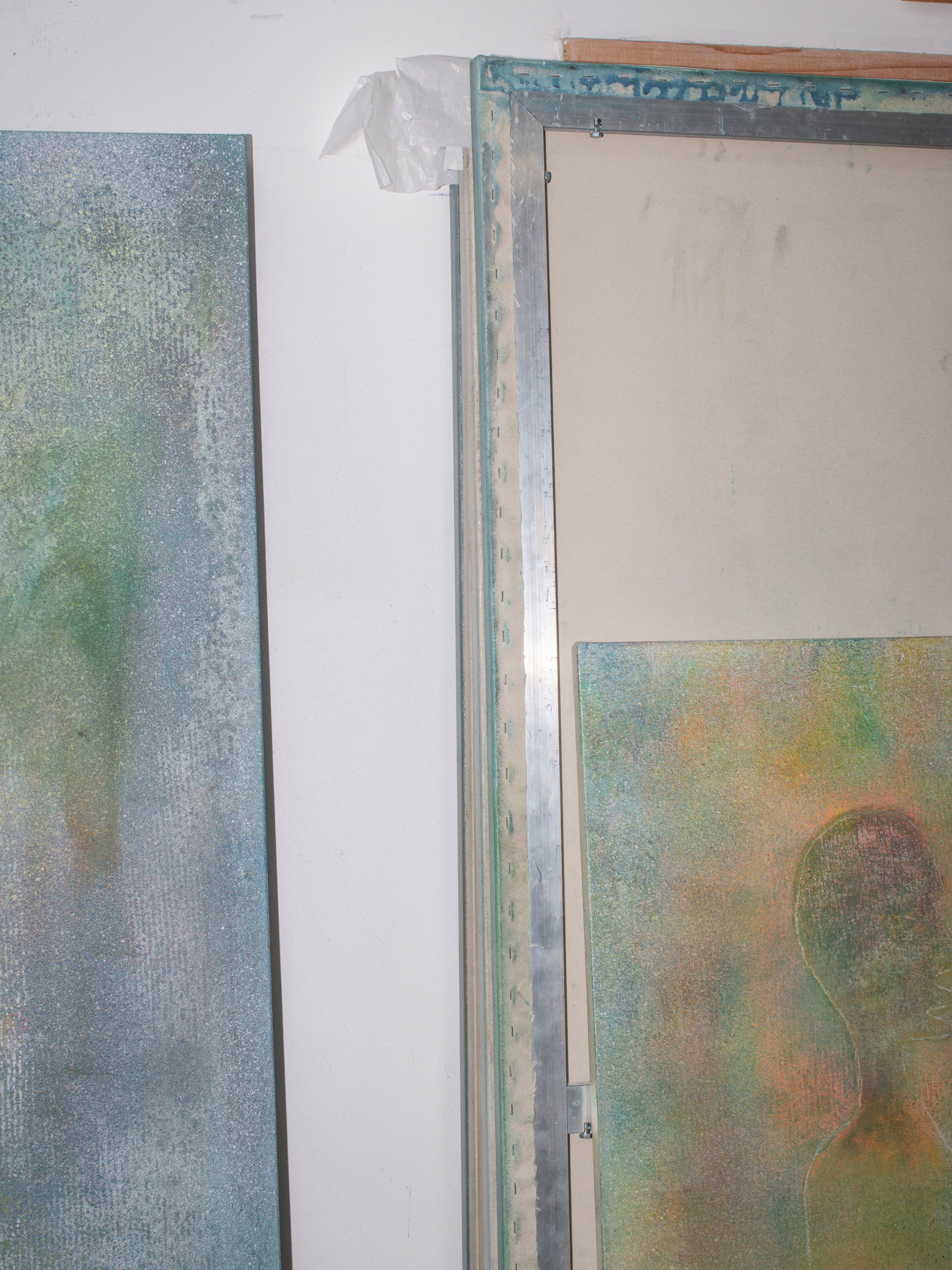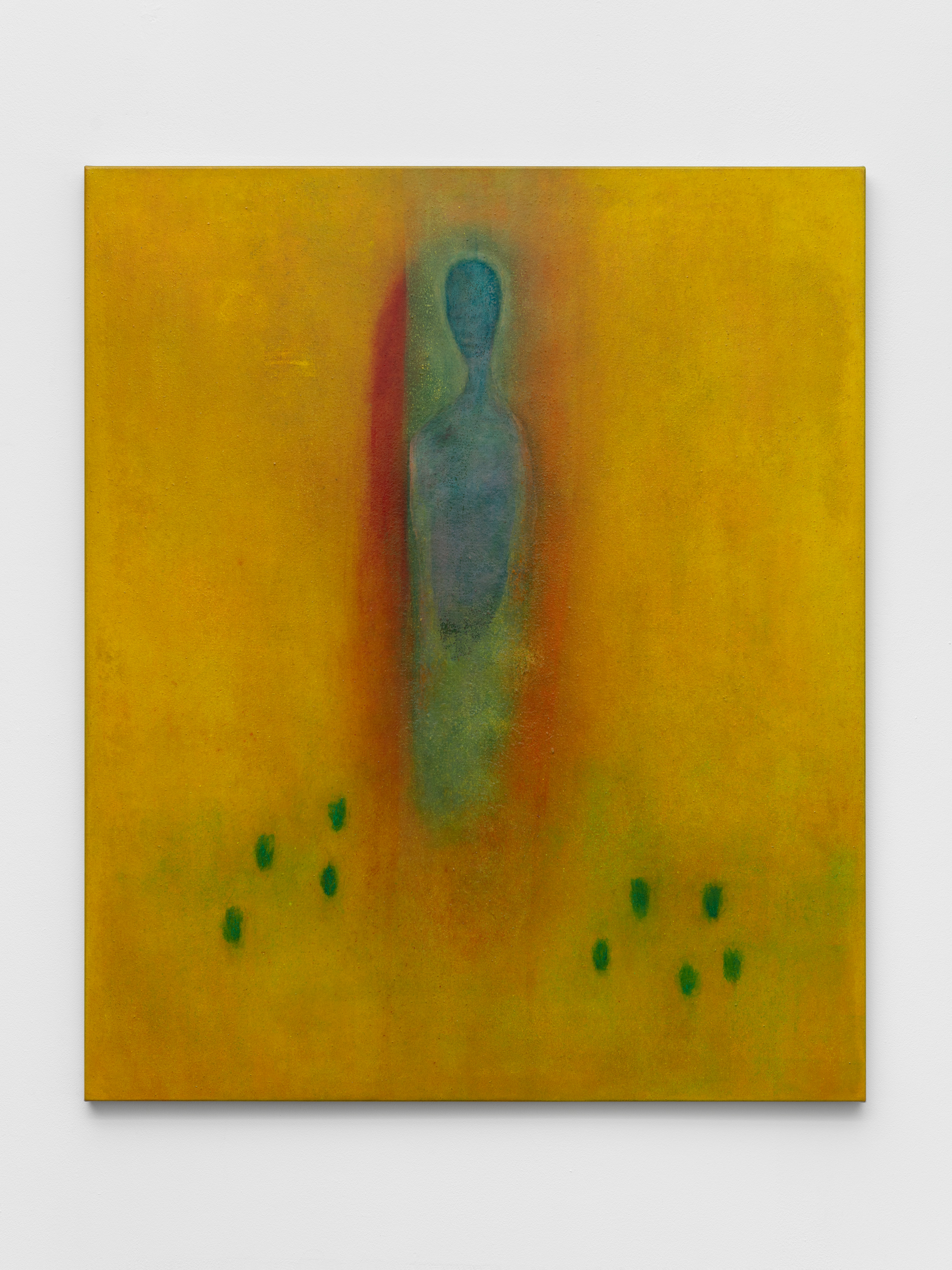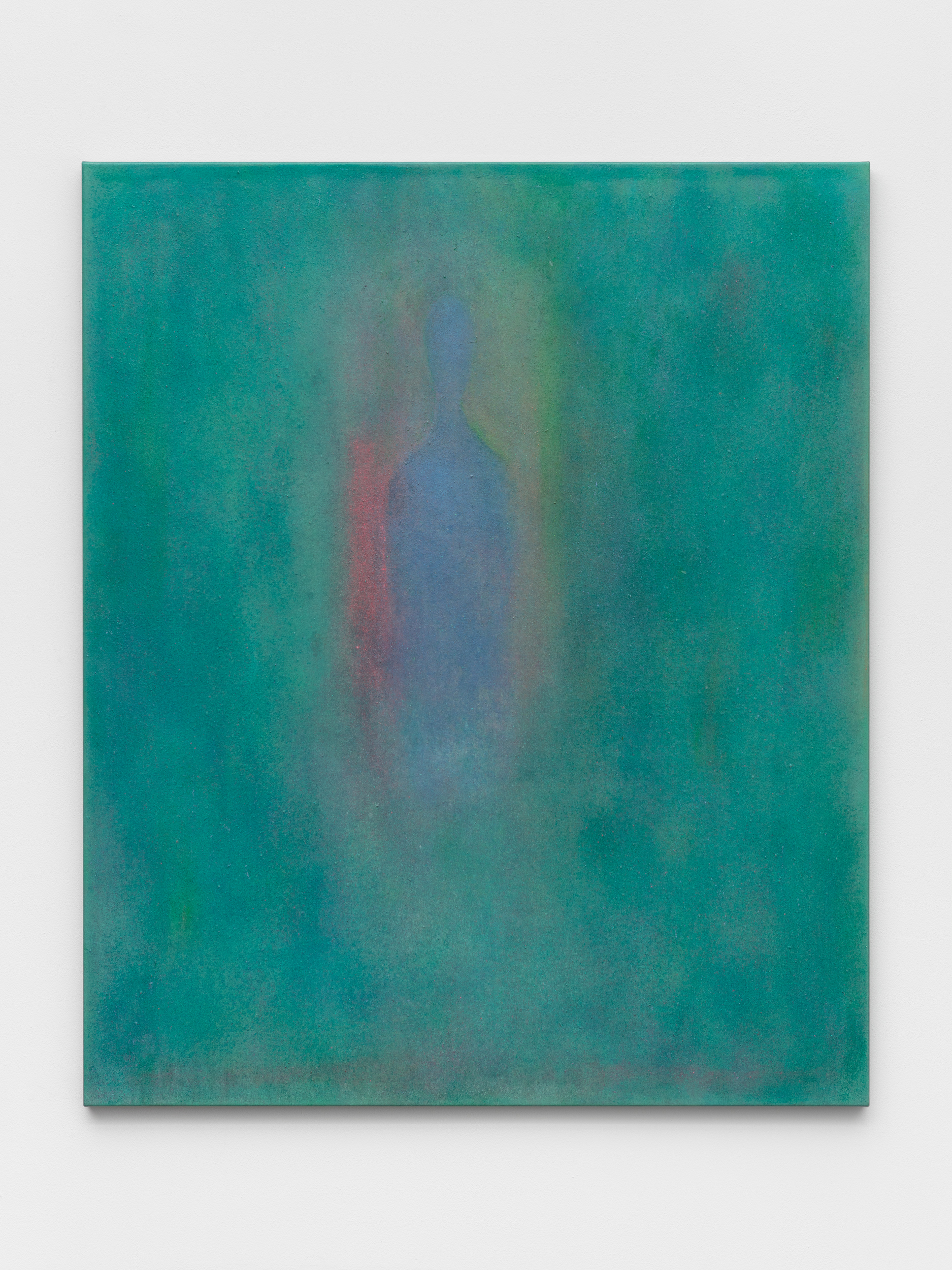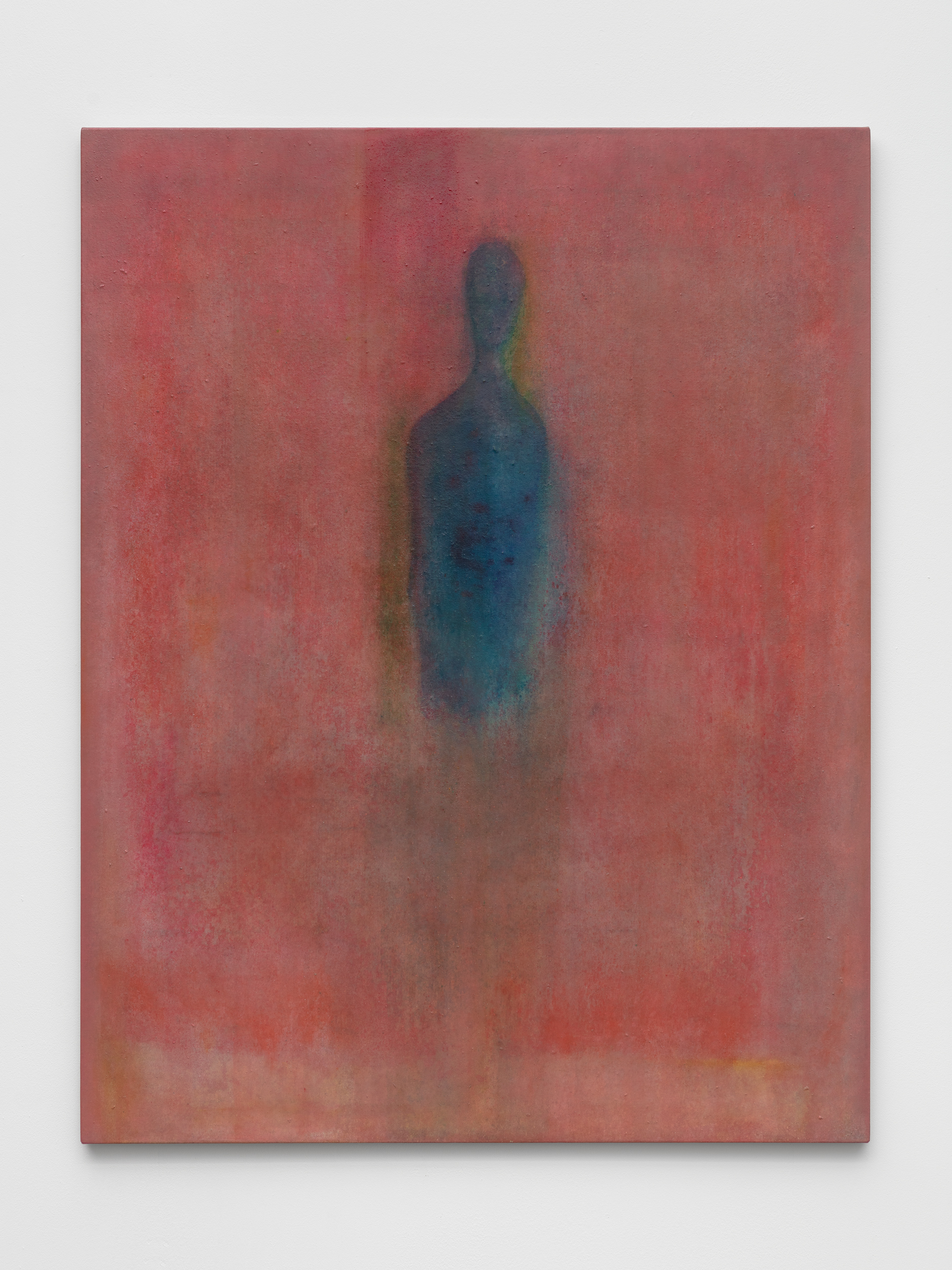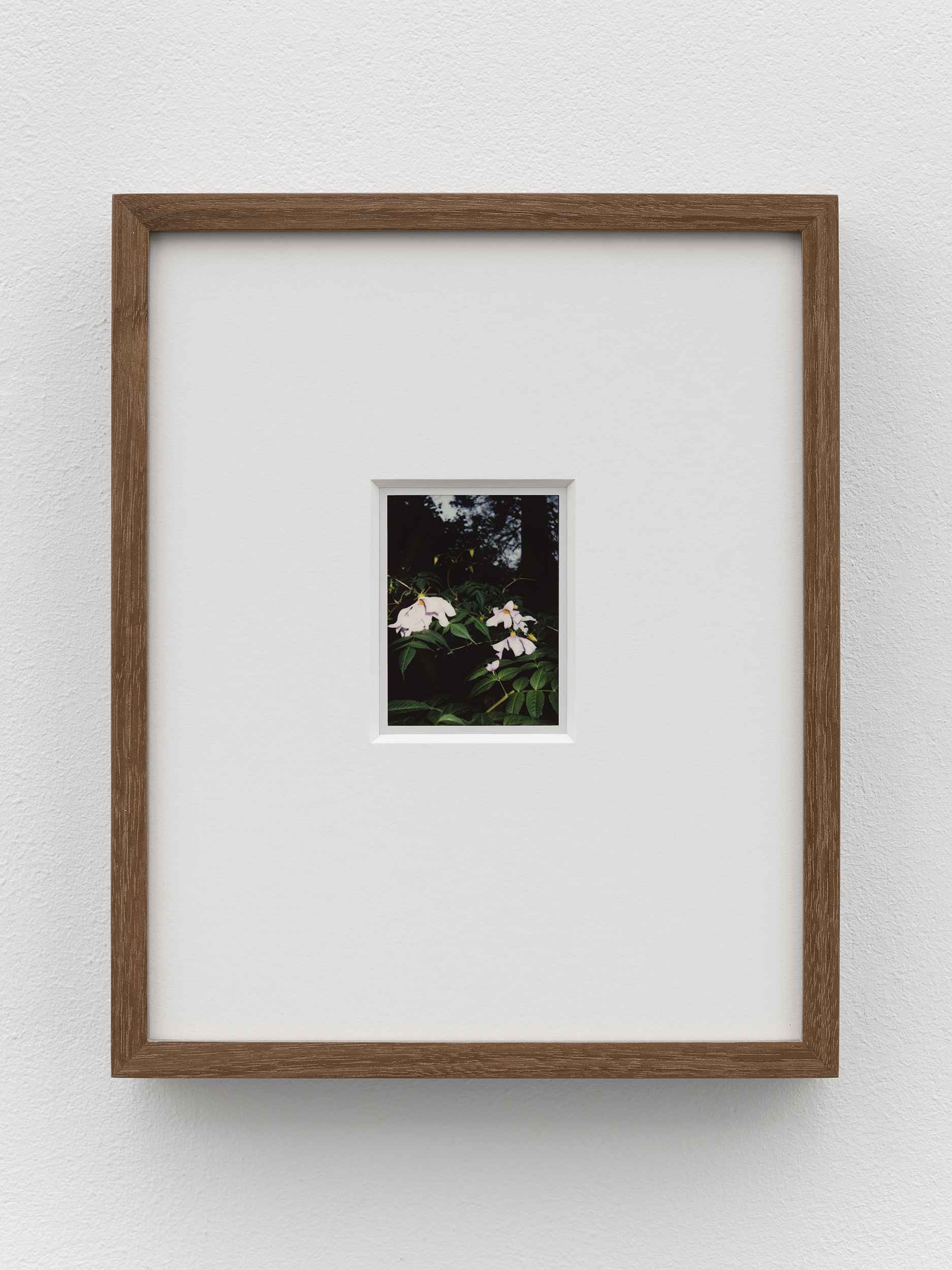Richard J. Butler
Can you describe your work in three words?
Abstract, figurative, pareidolia.
What got you into the arts? How did you become an artist?
I’ve always wanted to be an artist since a young age. Art holds a special power for me, it’s really the only thing that I have a sustained interest in. Every time I look at images of cave paintings, especially the hand stencils, it sends a shiver down my spine; that’s the power of art. The fact that there isn’t a right or wrong answer when it comes to art drew me to it at school, more so than other, more academic subjects.
What drew you to painting as a medium?
What painting offered me was a support structure (the canvas) on which I could do anything. You can put anything onto a canvas yet it always remains a ‘painting’. Over time I’ve become fascinated with painting as a medium. The fact that it can be illusionistic yet somehow physical is something I find very alluring. When people think about paint, they often see a coloured, viscous material coming out of a tube, but when I think about paint I see a pile of coloured dust, pigments that have come from the ground or other natural sources.
You use a very unique technique when making your paintings. Can you tell us more about your process?
I think the process came out of the fact that I approached painting from a non-painterly angle. Like I said, the blank canvas offered me a support on which I could apply anything; first it was dust, then I started using grated pastel and finally I started sticking the paintings to packing blankets. Eventually, these three techniques got combined into what I do today. I generally work with the canvas leaning against the wall at an angle covered with paint. Using a homemade sieve, I grate dry pastel or pigment over the surface letting it fall into the paint to create lush textures of colour. I then press the still-wet painting into a packing blanket laid on the floor; when it is pulled off, a lot of the pigment sticks to the blanket leaving patterns on the canvas. Repeatedly doing this builds up complex layers over time. However, it’s not a strict process, I’m not a purist or a ‘process’ painter. Recently I began using brushes, although I detest brush marks in my paintings. I often use my hands to create marks and have just started experimenting with rollers.
Are there any ongoing themes within your work?
The process is very important to my practice, it allows for a lot of chance elements to take place that I then subsequently work from. Pareidolia fascinates me and plays a large role in what I do. It’s the tendency of the human mind to see patterns, shapes and faces in inanimate objects or abstract patterns, like cloud formations etc. Alongside this comes an interest in mythology, cosmology, ghosts, death and rebirth. Literature also plays a big role, it is often the inspiration behind a lot of my work.
Who are the artists that have inspired you most?
A lot of the usual suspects: Munch, Bacon, Giacometti, Klee, Odilon Redon. I also love the work of Nancy Spero, especially her overlooked, early paintings. Carol Rama, Ken Kiff and Miriam Cahn, the list goes on…
Alongside your paintings, you’ve also produced an extensive series of Polaroid photographs since 2018, entitled A Second Sun. Can you tell us more about this body of work?
After I was given a new Polaroid camera as a Christmas present with the hope that I might take pictures of my friends and family, I proceeded to take pictures of flowers still in bloom that I found in and around people’s gardens. It was winter, I had recently completed a large body of work that year and I was taking a break from painting. My second son had just been born (hence the title), so I was spending a lot of time at home or walking around my neighbourhood looking out for the occasional flower or bit of foliage that took my fancy. At a first glance, a lot of people seem to think that they are taken at night because they are often so dark, but in reality it’s to do with the low light conditions of a winter’s day combined with the high flash of the camera. It’s something that I’ve continued to do every winter since, it makes the days seem shorter!
What do you hope to convey through your art?
A sense of timelessness. I’d like my work to have the feeling of it having been made at any point in history, to somehow reside outside of time.
What interested you about joining Canopy Collections?
There seems to be a stigma, especially with younger artists, about people buying art and having it in their homes. I don’t really understand this position, to me that's what art has always been about. Canopy Collections approaches this with a fresh, exciting new look, working with serious, dedicated artists. Having joined their roster for their second collection, I could see that I would be in good company.
Do you collect art from other artists? How important is it for you to live with art?
Oh it’s very important. As an artist I’d be a hypocrite if I didn’t feel it necessary to have art in my home. A bare wall is like a bare light bulb, it just feels fundamentally wrong!
Any projects in the pipeline?
I am currently working in collaboration with a musician who goes by the name Night Movies to produce a painting for their forthcoming album cover. It will be released later this year.
